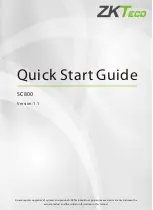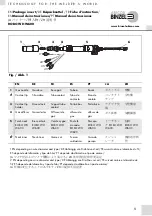
d
e
f
g
h
©
Street
Crane
Co
Ltd
Page
10
of
103
Ref:
D3256
rev.
B
1.
GENERAL
SAFETY
INSTRUCTIONS
1.1
SYMBOLS
1
WARNING
–
This
symbol
draws
attention
to
the
possible
injury
or
risk
of
life.
2
WARNING
OF
ELECTRICAL
POTENTIAL
–
This
symbol
is
found
on
electrical
enclosures.
These
should
only
be
opened
by
qualified
persons
or
suitably
instructed
personnel.
3
WARNING
OF
SUSPENDED
LOAD
–
This
symbol
warns
of
the
risk
to
life
and
limb
from
standing
under
a
suspended
load.
1.2
PERSONNEL
‐
Definitions
and
Attributes
The
user
should
ensure
that
the
person
carrying
out
any
task
has
such
appropriate
practical
and
theoretical
knowledge
and
experience
of
the
equipment
in
question
as
will
enable
them
to
perform
the
task
safely
and
recognise
any
hazards
associated
with
the
work.
They
should
be
physically
and
mentally
fit
and
trained
in
Safe
Hoisting
Practices
and
the
use
of
safety
and
access
equipment.
No
work
of
any
kind
should
be
authorised
to
persons
who
are
under
the
influence
of
narcotics,
alcohol
or
medication,
which
affects
their
ability
to
react.
Hazards
can
only
be
minimised
by
care,
common
sense
and
being
alert
at
all
times.
Various
personnel
can
be
involved
in
the
lifting
operation,
installation
and
inspection
and
maintenance
of
the
equipment,
supervisors,
coordinators,
operators,
slingers,
signallers,
erectors
and
maintenance
personnel.
The
duties
of
these
personnel
and
their
minimum
attributes
are
defined
in
BS
7121
‐
1:2006.
Also,
ISO
15513
gives
competency
requirements
for
crane
drivers
(operators),
slingers,
signallers
and
assessors.
In
the
text
of
this
manual
the
following
definitions
apply:
‐
User
–
person
or
organisation
that
has
control
of
both
the
lifting
operation
and
the
crane
operator
and
has
the
responsibility
to
ensure
the
equipment
is
properly
maintained
and
thoroughly
examined
by
a
competent
person.
Competent
Person
–
person
who
has
such
practical
and
theoretical
knowledge
and
mechanical
and
/
or
electrical
experience
of
the
crane
/
hoist
and
the
equipment
used
in
the
lifting
operation
which
enables
them
to
detect
defects
or
weaknesses
and
to
assess
their
importance
in
relation
to
the
safety
and
continued
use
of
the
lifting
equipment.
Operator
‐
trained
person
who
is
operating
the
crane
/
hoist
for
the
purpose
of
positioning
loads.
1.3
MAINTENANCE
SAFETY
PROCEDURE
When
personnel
are
required
to
work
on
the
crane
/
hoist
for
inspection,
maintenance
or
other
reasons,
a
system
should
be
in
operation
to
ensure
that
they
are
not
endangered
by
movement
of
the
equipment
and
that
a
secure
working
place
is
provided.
Personnel
should
follow
such
a
procedure.
Where
no
formal
procedure
exists,
Street
Crane
recommends
the
following:
‐
On
commencing
any
maintenance
work
on
the
crane
or
hoist:
‐
1.
Obtain
the
necessary
authorisation
/
permit
to
work.
2.
Park
the
crane
or
hoist
in
a
designated
maintenance
position,
clear
of
any
personnel.
3.
Follow
the
appropriate
health
and
safety
regulations
and
procedures.
4.
Remove
any
loads
or
attachments
from
the
hook
and
ensure
that
the
bottom
block
is
suitably
supported
to
prevent
accidental
runaway.
Summary of Contents for ZX6
Page 2: ......
Page 4: ...defgh Street Crane Co Ltd IV THIS PAGE IS INTENTIONALLY BLANK ...
Page 99: ...defgh Street Crane Co Ltd Ref D3256 rev B Page 99 of 103 NOTES ...
Page 100: ...defgh Street Crane Co Ltd Page 100 of 103 Ref D3256 rev B NOTES ...
Page 101: ......
Page 102: ......











































